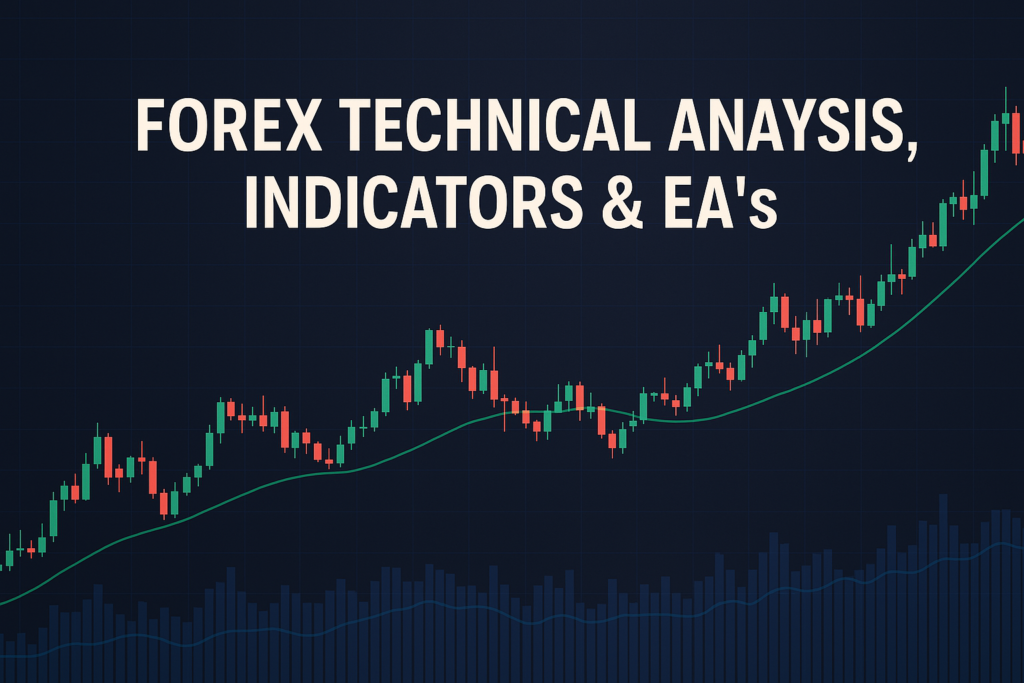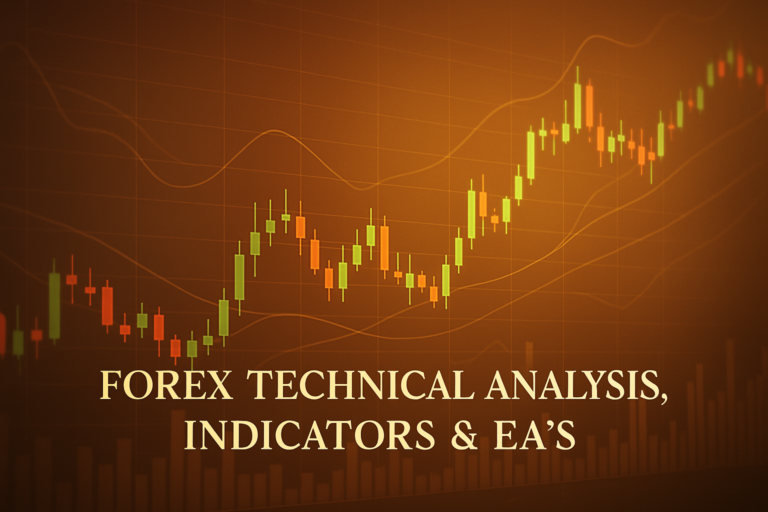
“Discover effective RSI chart analysis for Forex trading. Learn strategies, advantages, and how to apply RSI for better trading success.”
“7 Essential Insights on RSI Chart Analysis for Forex Traders”
RSI chart analysis is a powerful tool in the world of Forex trading. It helps traders understand market trends and make informed decisions. By analyzing the Relative Strength Index (RSI), traders can gauge whether a currency is overbought or oversold. This knowledge can lead to better trading results.
However, many traders, both beginners and professionals, face challenges when using RSI chart analysis. They often struggle to interpret the data correctly or use it effectively in their trading strategies. Without a solid understanding, they may miss opportunities or make poor decisions. Therefore, grasping this concept is vital for anyone looking to succeed in Forex trading.
In this article, we will explore the basics of RSI chart analysis, its history, advantages, and disadvantages. We’ll also cover how to apply it on trading platforms like MT4 and MT5. Additionally, we will share practical trading strategies, both standalone and combined with other indicators. By the end, you will have a clear understanding of how to use RSI chart analysis to enhance your trading.
One common challenge traders face is order execution failure. This occurs when a trader’s order does not execute as expected, leading to missed opportunities or losses.
What is a RSI Chart Analysis?
RSI chart analysis, or Relative Strength Index, is a tool that helps traders analyze price movements in the Forex market. Think of it as a scorecard for currency pairs. It ranges from 0 to 100 and shows how strong or weak a currency is compared to its past performance. A score above 70 often means a currency is overbought, while a score below 30 suggests it is oversold.
Types of RSI Chart Analysis
There are different types of RSI chart analysis, including Simple RSI, Exponential RSI, and Weighted RSI. Each type has unique characteristics. Simple RSI is the most common and easy to understand. Exponential RSI gives more weight to recent prices, making it more responsive. Weighted RSI focuses on specific periods, allowing traders to tailor their analysis.
How RSI Chart Analysis Smooths Out Price Action
RSI chart analysis smooths out price action by averaging price changes over time. This helps eliminate noise and provides a clearer picture of the market trend. By looking at the RSI, traders can quickly identify whether the market is bullish or bearish. It acts like a filter, helping traders focus on significant price movements and not just random fluctuations.
Common Periods Used and Why
Traders often use common periods like 14, 9, or 21 days for RSI chart analysis. The 14-day period is popular because it strikes a balance between sensitivity and reliability. Shorter periods, like 9 days, respond quickly to price changes but can lead to false signals. Longer periods, like 21 days, provide a smoother trend but may lag behind current market conditions.
The History of RSI Chart Analysis: How It Became Popular
Origin of RSI Chart Analysis
The RSI chart analysis was created by J. Welles Wilder Jr. in 1978. He developed it to help traders identify overbought and oversold conditions in the market. Wilder believed that understanding momentum was crucial for successful trading. His work laid the foundation for many traders today.
When Did Traders Start Using It Widely?
RSI chart analysis gained popularity in the 1980s as more traders recognized its usefulness. As Forex trading expanded, more people began to adopt this tool, appreciating its ability to simplify complex price movements. Over the years, it has become a staple in many trading strategies.
Real-Life Stories
Many professional traders have made fortunes using RSI chart analysis. For example, one trader noticed that RSI indicated an oversold condition on a currency pair. They decided to enter a trade and, within a few days, the currency surged. This trader made a significant profit, demonstrating the power of RSI in real-life situations.
Advantages and Disadvantages of RSI Chart Analysis
Advantages:
There are many benefits to using RSI chart analysis in Forex trading:
- Helps Identify Trends Easily: RSI makes it simple to see whether a currency is trending up or down.
- Useful for Dynamic Support and Resistance: Traders can use RSI levels to find potential support and resistance points.
- Works Well for Crossover Strategies: RSI can help traders identify crossover points, which are ideal for entering and exiting trades.
Disadvantages:
However, there are also some downsides:
- Lags Behind Price Movements: RSI may not respond immediately to sudden price changes, leading to missed opportunities.
- Can Give False Signals in Sideways Markets: During sideways market conditions, RSI may provide misleading signals that could confuse traders.
How to Apply RSI Chart Analysis on MT4 & MT5
Step-by-Step Guide to Adding RSI Chart Analysis on Charts
To add RSI chart analysis on MT4 or MT5, follow these simple steps:
- Open your trading platform and select the currency pair you want to analyze.
- Click on the “Insert” tab, then choose “Indicators.”
- Find “Oscillators” and select “Relative Strength Index.”
Customizing RSI Chart Analysis Settings
Once you’ve added the RSI indicator, you can customize its settings. Adjust the periods, colors, and types to suit your trading style. For example, you might want to change the period to 14 and choose a bright color for better visibility.
Saving Templates for Easy Application
After customizing your RSI settings, save your template for easy application in future trades. This way, you won’t have to repeat the process every time you analyze a different currency pair.
5 to 7 Trading Strategies Using Only RSI Chart Analysis
All Time Frame Strategy (M5 to D1)
This strategy can be applied across different time frames, from M5 to D1. It works by entering trades when the RSI crosses above 30 for a buy signal and below 70 for a sell signal. For example, if you see the RSI moving up from 28 to 32, it could be a good time to buy.
Trending Strategies
In trending markets, use RSI to confirm the direction of the trend. If the RSI is above 50, look for buying opportunities. If it’s below 50, focus on selling. For instance, if a currency is in an uptrend and the RSI dips to 40, it might be a good chance to buy.
Counter Trade Strategies
Counter trade strategies involve trading against the trend. Use RSI to identify overbought or oversold conditions. For example, if the RSI is above 70 in an uptrend, consider selling, anticipating a pullback.
Swing Trade Strategies
For swing trading, look for RSI divergences. If the price makes a new high but RSI fails to do so, it may signal a reversal. For instance, if the price is climbing, but the RSI shows lower highs, it might be time to sell.
5 to 7 Trading Strategies Combining RSI Chart Analysis with Other Indicators
All Time Frame Strategy (M5 to D1)
Combine RSI with Moving Averages for a powerful strategy. Use a 50-period moving average. Buy when the RSI crosses above 30 and the price is above the moving average. For example, if the price is above the 50 MA and the RSI crosses from 28 to 32, it’s a strong buy signal.
Trending Strategies
Pair RSI with Bollinger Bands. When the price touches the lower band and the RSI is below 30, consider buying. Conversely, if the price hits the upper band and the RSI is above 70, it may be time to sell. This combination helps confirm entry points.
Counter Trade Strategies
Use RSI with MACD for counter trading. When the RSI is above 70 and MACD shows a bearish crossover, it could signal a selling opportunity. This helps confirm that the market may reverse.
Swing Trade Strategies
Combine RSI with Fibonacci retracements. Use RSI to identify overbought or oversold levels at key Fibonacci levels. For example, if the price retraces to the 61.8% level and the RSI is below 30, it might be a good time to buy.
Additionally, if you’re interested in currency pairs, you might want to learn about 39 CHF to USD for insights into trading challenges.
Top 10 FAQs About RSI Chart Analysis
1. What does RSI stand for?
RSI stands for Relative Strength Index, a momentum oscillator used to measure the speed and change of price movements.
2. How do I interpret the RSI values?
RSI values range from 0 to 100. A value above 70 indicates overbought conditions, while a value below 30 indicates oversold conditions.
3. Can RSI be used in any market?
Yes, RSI can be used in Forex, stocks, and other financial markets. Its versatility makes it a popular choice for traders.
4. How often should I check the RSI?
It depends on your trading style. Day traders may check RSI multiple times a day, while swing traders might look at it daily or weekly.
5. Is RSI a standalone indicator?
While RSI can be used alone, many traders prefer to combine it with other indicators for better confirmation of signals.
6. What is the best RSI period?
The most common period is 14, but traders can adjust it based on their trading strategy and time frame.
7. Can RSI give false signals?
Yes, RSI can provide false signals, especially in sideways markets. It’s essential to use other indicators for confirmation.
8. How do I set up RSI on my trading platform?
Most trading platforms allow you to add RSI as an indicator under the “Oscillators” section. You can customize settings based on your preference.
9. How does RSI help in risk management?
RSI helps traders identify potential entry and exit points, allowing for better risk management and improved decision-making.
10. Should I always trust the RSI?
While RSI is a valuable tool, it should not be the only basis for a trading decision. Always combine it with other analysis methods for the best results.
Conclusion
In summary, understanding RSI chart analysis is crucial for Forex traders. It offers insights into market trends, helping you make informed decisions. Remember to test different strategies and adapt them to your trading style before using real money.
With practice, you can master RSI chart analysis and improve your trading outcomes. Happy trading!
The Meta description:
This post complements what we’ve discussed here—check it out for more insights MQL5, EToro Academy
Expand Your Knowledge
- 📌 Forex Trading Learning Road Map
- 📌 Forex Trading Course with no Fees
- 📌 Forex Trading Issues, Problems, and Solutions
- 📌 Forex Daily Forecast & Live Updates
- 📌 Forex Fundamental & News Analysis: Tomorrow’s Market Movers & Trade Opportunities
- 📌 Forex Education Hub: Learn & Profit
- 📌 Forex Technical Analysis, Indicators & EA’s
Start Trading Today
Ready to take your forex trading to the next level? Open an account with Exness, one of the most trusted platforms in the industry. 👉 Sign Up Now and trade with confidence!
My recommended broker stands out with ultra-low spreads for beginners, instant withdrawals, and zero spread accounts for pro traders.
Trusted since 2008, lightning-fast execution, no hidden fees, and a secure, transparent trading environment—giving you the edge you need to succeed. 🚀
YouTube Video Library: Related Videos
Note: The video above is embedded from YouTube and is the property of its original creator. We do not own or take responsibility for the content or opinions expressed in the video.



